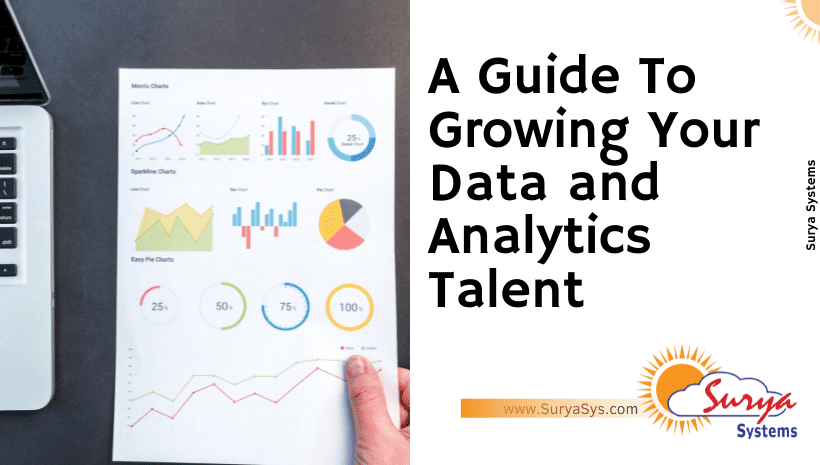- January 4, 2022
- Posted by: Sean Cooper
- Category: Tech Updates

Data and Analytics Talent Growth Guide:
A new report says that companies are increasingly hiring Data and Analytics Talent, but there is little consensus on which qualifications are needed.
A data scientist may specialize in statistics, open-source coding, or solving business problems with data. There was never a realistic chance of finding a data scientist unicorn with all these skills.
As the position has grown in popularity and demand, more and more professionals have begun using it to describe their roles. To meet the growing demand, colleges and universities have created hundreds of new programs in data science and analytics.
Nevertheless, these programs differ widely in the skills they teach, and some universities offer multiple programs with varying emphasis. A job title such as data scientist or quantitative analyst is unlikely to accurately represent an employee’s capabilities, regardless of whether they are newly hired or experienced.
There are initiatives underway to standardize the different roles and requisite skills for data and analytics across organizations, but they are still in their early stages. It is a good idea, but the process of developing new standards can take years.
Meanwhile, employers should focus on classifying and certifying the various types of analytical work they have and need.
Furthermore, the data teams would benefit from expanding their talent pool through partnerships with universities and cultivating communities within the organization to help develop employees. These steps should be followed by businesses seeking to improve operations and achieve digital innovation.
Data-Analytics Skills:
Data scientists require a variety of skills depending on the type of data they are analyzing as well as the scope and scale of their work. Analytical experts must nevertheless possess a wide range of skills to be successful.
According to data scientists, most of their time is spent cleaning and aggregating data. Consequently, organizations often have to collect unstructured data from a variety of sources. And almost all modern databases and data analytics tools only support structured data, which makes it difficult to make sense of this data.
Furthermore, data scientists spend 19 percent of their time gathering data sets from various sources. Tech-savvy companies collect data related to industry-specific metrics to update their market intelligence and benchmark their performance against competitors.
During the era of big data, organizations can easily find credible information from government agencies such as the US Bureau of Labor Statistics, web-based data platforms, and market research firms.
How to Make the Most of Your Data Analysis:
It is not necessary for most companies to have an army of data scientists or to use cutting-edge analytical techniques. The most important thing is to develop analyses that address key commercial and operational issues.
Often, companies lack a clear strategy and operational model for using these capabilities in a way that fits their needs. There are three components to any such effort:
Individuals who are proficient in combining their business expertise with advanced analytics methods and applications
Analytical expertise and an understanding of the business problem are transformed into actionable insights based on evidence
To develop and deploy appropriate analytical tools and techniques, the organization should assemble a small team of analytics professionals (not necessarily data scientists).
As a result, these two factors enable businesses to close the gap between technical skills and commercial thinking.
The Roles of a Data Analytics Team:
Data Engineer:
A Data Engineer’s main duties include compiling, storing, and analyzing large amounts of data. A data scientist collects raw data and transforms it into analysis-ready data through various programs. This process relies on data engineers, who transform the collected information into information that is useful to others.
Data Scientist:
Data Scientists are responsible for making viable predictions by utilizing advanced mathematics and statistics. Executives can make actionable plans based on the data scientist’s work. A lot of predictions are geared towards boosting sales, maintaining existing clients, and attracting new clients.
Data Analyst:
Data analysts play a crucial role in interpreting the findings for non-technical teams. Reports combine what the scientist finds with their interpretation. A Data Analyst can answer questions and solve problems by cleaning and interpreting the data.
Business Analyst:
Business analysts go beyond that. Their data and acumen help them bridge the gap between IT specialists and owners and executives on the business team. Analysts are knowledgeable about the language and can help translate anything that is difficult to understand.
Here are 3 things to consider when building a data analytics team:
What is the best size for my data team?
There are many factors to consider when determining the size of a data science team. Typically, the larger the company, the more data it will need to master. Similarly, the larger the team, the more data-driven the company will be.
Consider the following questions:
- What is the amount of data generated?
- Will the team work on multiple projects simultaneously?
- So what purpose does the data team exist?
- To whom will they report?
What is the plan for centralizing the team?
There are some models that have centralized data teams and one team serves the entire organization. Other models lack centralized data teams. Each department owns its processes, employees, and resources. Other departments use a combination of both.
It is not possible to have an ideal structure; every organization needs its own based on its data dependency. However, it remains an important consideration; it can have a significant impact on data governance.
Do you have a data strategy for the organization?
It is necessary to have a roadmap for identifying how dependent a company will be on data. If every business activity is based on data, the data infrastructure needs to be robust. A significant analysis requires processes, tools, and professionals.
For example, a small staff might be sufficient if only significant business decisions will be based on data, and daily, less significant decisions won’t need analysis.
